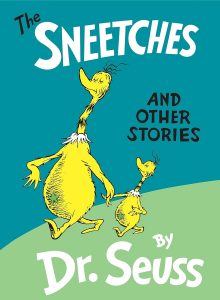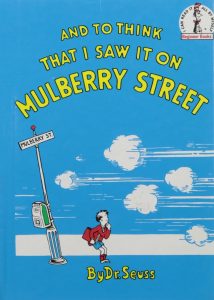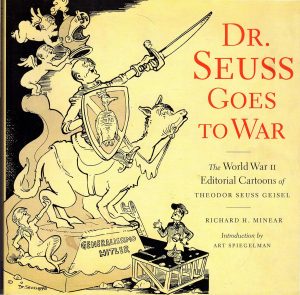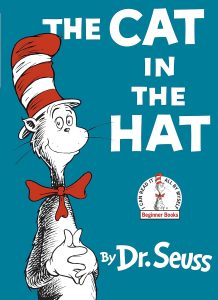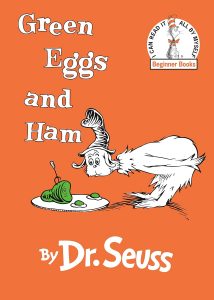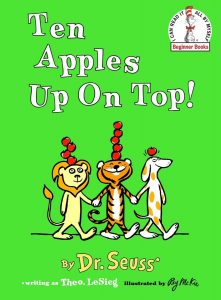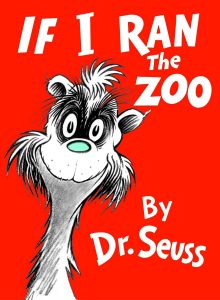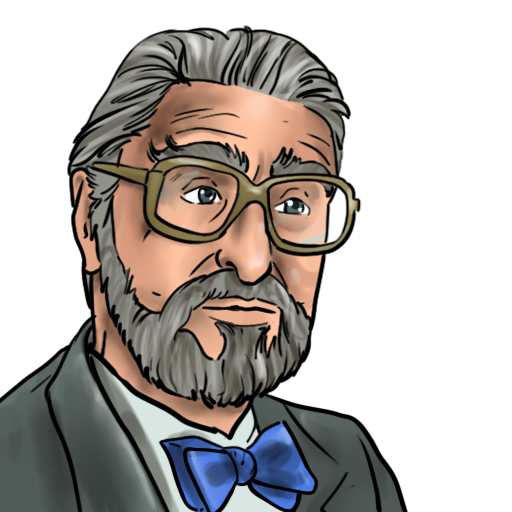
Do you have a favorite Dr. Seuss book? Perhaps it’s the one with the Cat in the Hat causing mischief, or maybe you love hearing about the Grinch who tried to steal Christmas. Dr. Seuss, whose real name was Theodor Seuss Geisel, was an amazing writer who filled our bookshelves and hearts with playful rhymes and unforgettable characters.
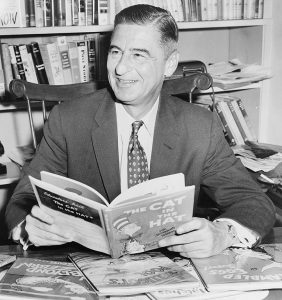
Who Was Dr. Seuss?
Dr. Seuss was born in 1904 in Springfield, Massachusetts. Funny enough, he wasn’t really a doctor! He added the “Dr.” to his middle name, Seuss (which was actually pronounced “Zoice,” like “voice”), because his dad always wanted him to be a doctor. But instead of checking people’s heartbeats or giving out medicine, Seuss decided to “cure” kids and adults by making them laugh with his stories.
Before the Books: Dr. Seuss’s Early Years
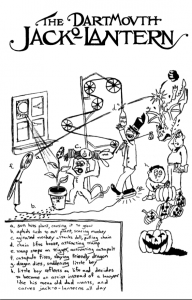
Long before The Cat in the Hat or Green Eggs and Ham, Dr. Seuss was just Theodor Geisel, known to his friends as Ted, a young man figuring out his path in life. At Dartmouth College, he discovered his love for writing and drawing. As the editor of the college’s humor magazine, the “Dartmouth Jack-O-Lantern,” he first used the pseudonym “Seuss” after a minor incident got him removed from his editor position. Adding “Dr.” to it came later as a playful nod to his father’s hopes that he’d pursue a doctorate.
After graduating, rather than diving straight into children’s books, Theodor ventured into the world of advertising. With his unique style and wit, he crafted cartoons for various magazine and newspaper ads, bringing products to life in imaginative and funny ways. This period honed his skills, laying the groundwork for the captivating worlds and characters he’d later create in his iconic children’s books.
A World of Funny, Fuzzy Characters
Dr. Seuss had a wild imagination. He introduced us to creatures we’d never even dreamed of! Remember the Lorax, who spoke for the trees? Or Horton the Elephant, who heard a tiny world on a speck? And of course, there are the Sleep-Book’s yawning creatures and the food-hating Sam-I-Am with his green eggs and ham.
The magic of Seuss’s stories wasn’t just in their fun rhymes but also in their meaningful messages. For example, The Sneetches talks about the silliness of discrimination, and Horton Hears a Who! reminds us that “a person’s a person, no matter how small.”
The Journey of “And to Think That I Saw It on Mulberry Street”
Before Dr. Seuss became a household name, he faced his fair share of challenges. His first book, And to Think That I Saw It on Mulberry Street, is a perfect example. The story’s special rhythm came to him on a cruise ship. While on board, the ship’s engine’s rhythmic sounds inspired him, and he began penning the tale of a boy’s imaginative journey down Mulberry Street.
But getting the book into the hands of readers wasn’t smooth sailing. Believe it or not, the book was rejected 27 times by different publishers! They just didn’t see the magic in it. But Dr. Seuss was determined. Finally, a friend who had just become a publisher decided to take a chance on it, and the rest is history. This story of persistence not only highlights the importance of believing in oneself but also shows how Dr. Seuss’s unique style and rhythm were revolutionary from the very start.
Dr. Seuss during World War II
After Dr. Seuss had published his first few books, including And to Think that I Saw It on Mulberry Street, The King’s Stilts, and Bartholomew and the Oobleck, the Second World War broke out. During the war, he did something totally different than writing fun children’s books. For a while after the war had started, but before the U.S. joined the war, he drew cartoons for a newspaper in New York. These weren’t cartoons for kids; they were silly drawings about a serious subject that told people how important it was to stop bad leaders in other countries.
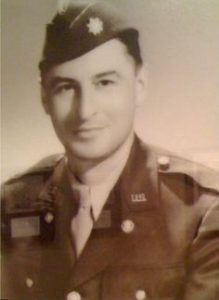
When the U.S. did join the war, Dr. Seuss worked with the army, but not as a soldier fighting in battles. Instead, he teamed up with famous movie-maker Frank Capra to make films for soldiers. These films helped teach soldiers important stuff in a fun way. It’s cool to think that the same guy who wrote about the Grinch and the Cat in the Hat also helped soldiers during a big war!
Books in Bouncy Verse
While many authors write in plain sentences, Dr. Seuss loved using “verse.” This means his books have a special rhythm when you read them out loud. Try it! When you read lines like, “I do not like green eggs and ham. I do not like them, Sam-I-Am,” you can feel the bounce and beat. It’s like a song without music.
This rhythm makes his books fun to read and even more fun to hear. Schools, libraries, and families often have Dr. Seuss reading days where everyone comes together to enjoy his bouncy words.
Books That Help Us Learn
Another cool thing about Dr. Seuss’s books? They help kids learn to read! Books like Hop on Pop and One Fish Two Fish Red Fish Blue Fish use simple words and phrases to help new readers get the hang of it. These books are not only fun but also educational.
Before Dr. Seuss came along, many beginner’s books for kids were, well, a bit dull. They often had simple and repetitive words, but they didn’t spark much excitement. Then, in came The Cat in the Hat! Dr. Seuss was actually challenged to write a captivating children’s book using only 236 different words. And guess what? He nailed it. This book, with its mischievous cat and entertaining story, made kids everywhere excited about reading.
Not long after, Dr. Seuss took on another challenge with Green Eggs and Ham, which he crafted using only 50 unique words! These books proved that learning to read didn’t have to be boring. Instead, it could be an adventure filled with fun characters and twisty-turvy rhymes. By combining engaging stories with limited vocabulary, Dr. Seuss transformed the way children learned to read, making it a joyful journey rather than a tedious task.
The Many Names of Dr. Seuss
Did you know Dr. Seuss wasn’t just Dr. Seuss? He had other names he wrote under too, like Theo LeSieg and Rosetta Stone. These aren’t just random names; they’re special “pseudonyms,” which are like nicknames authors use when they write books.
“LeSieg” is actually “Geisel” (his real last name) spelled backward! He used this name for books he wrote but didn’t illustrate, like Ten Apples Up On Top! and Wacky Wednesday. Then there’s “Rosetta Stone,” a name he used for the book Because a Little Bug Went Ka-Choo! It’s like he had a playful secret identity for each type of story he wanted to tell. Pretty cool, right? It’s like if you wrote stories but used different names for your adventure tales, your mystery stories, or your funny poems!
Understanding Dr. Seuss’s Books
You might have heard that some of Dr. Seuss’s books have stirred up discussions and debates. It’s true. A few of his books, written a long time ago, have pictures and words that today’s readers find not very nice or respectful to people from different cultures. It’s important to remember that books, like all things, are made by people who can make mistakes or have ideas that change over time. Some people believe that these books should still be read with the understanding that they were written in a different time, while others feel they should be set aside. The main thing is to keep talking about books, learn from them, and always strive to be understanding and kind to one another.
A Lasting Impact
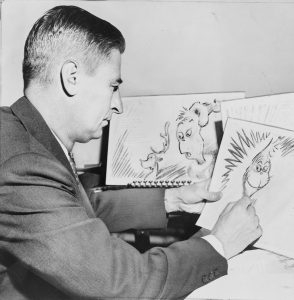
Dr. Seuss continued writing books until he passed away in 1991, and his wonderful books continue to inspire young readers everywhere. Libraries, schools, and bookstores celebrate his birthday, March 2nd, as “Read Across America Day.” On this day, people everywhere pick up a Dr. Seuss book (or any book!) and enjoy the fun of reading.
And the amazing thing is, his books still come out from time to time; books like Horton and the Kwuggerbug and Dr. Seuss’ Horse Museum. How? Before he passed away, Dr. Seuss wrote and drew many stories. Some of them were kept safe and published later. So, even years after he’s gone, we still sometimes get new tales from this fantastic writer.
Dr. Seuss’s books are more than just stories; they’re adventures into wacky worlds, lessons about life, and, most importantly, bundles of fun. Whether you’re reading about the places you’ll go or laughing at Thing 1 and Thing 2’s antics, one thing is for sure: Dr. Seuss has left behind a world of whimsical words that will continue to bring joy to children for generations to come. So, next time you pick up one of his colorful books, remember you’re holding a piece of magic, spun together with rhymes, lessons, and a lot of love.
- Update to Poems-by-Length Page - April 18, 2024
- Create Your Own Poetic Puppet Show - April 16, 2024
- Leap into Laughter with “A Festival for Frogs” - March 26, 2024

